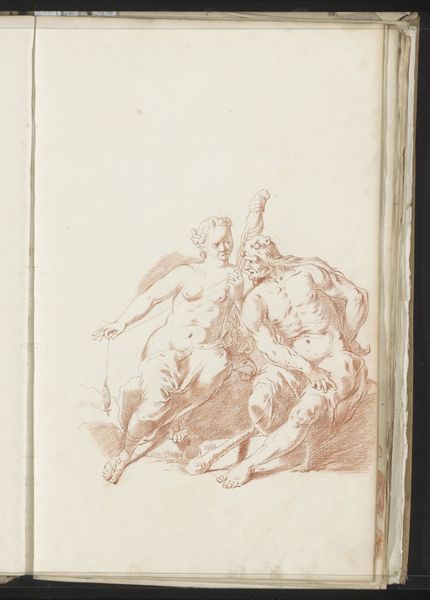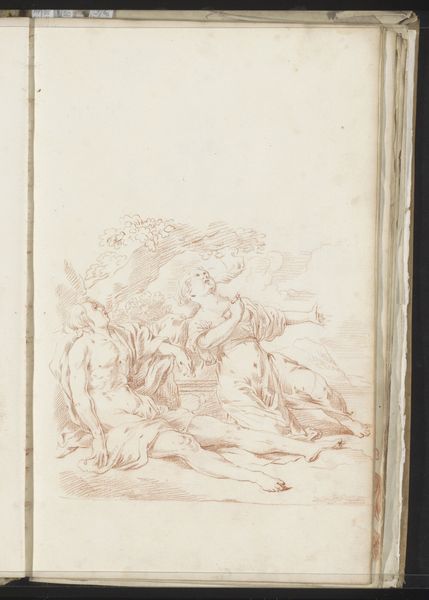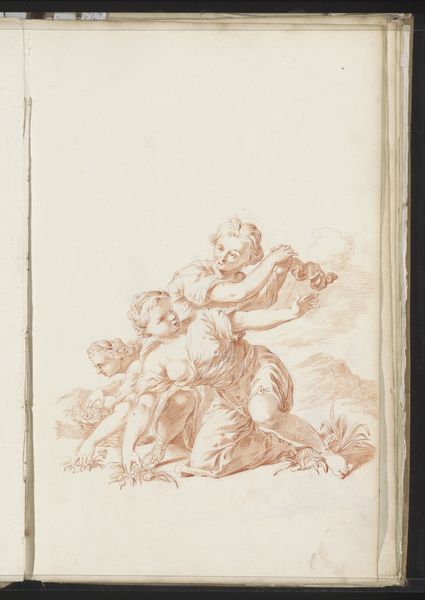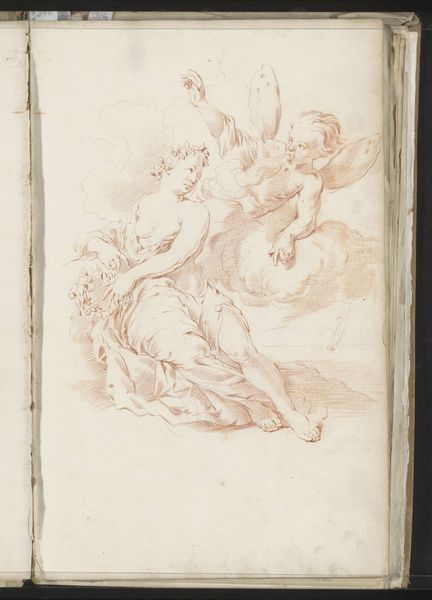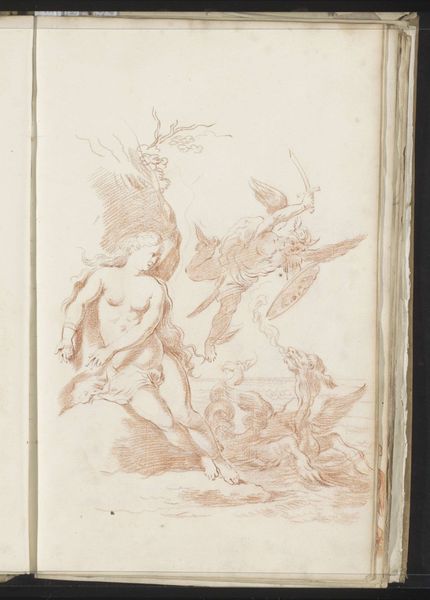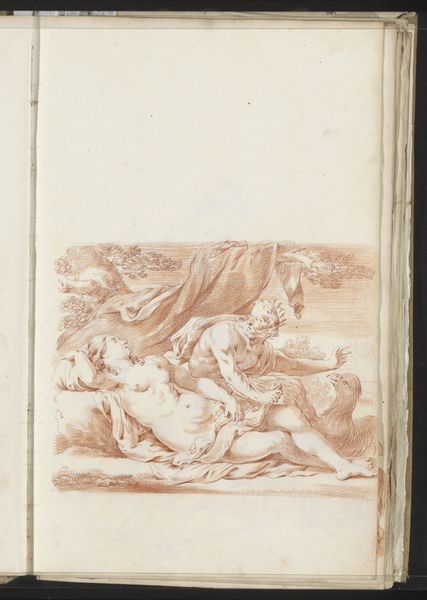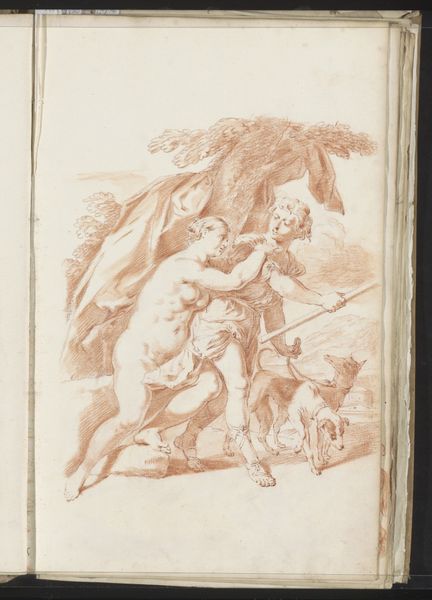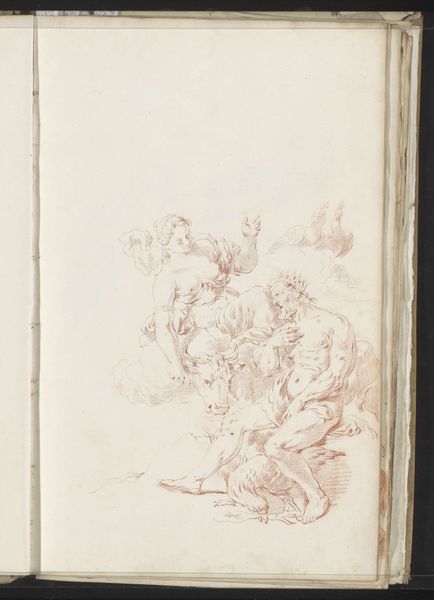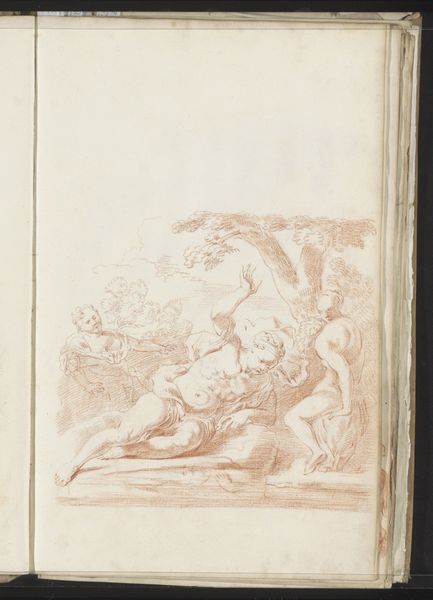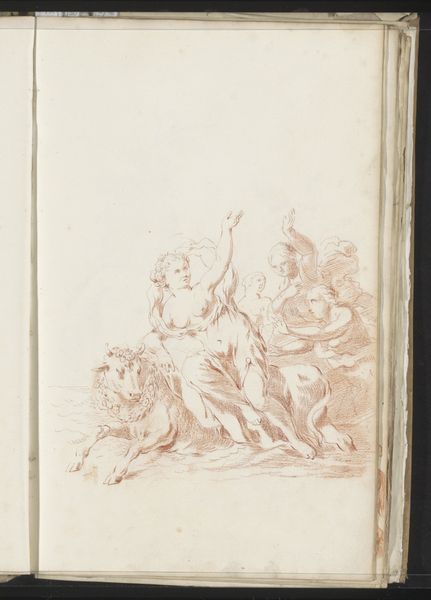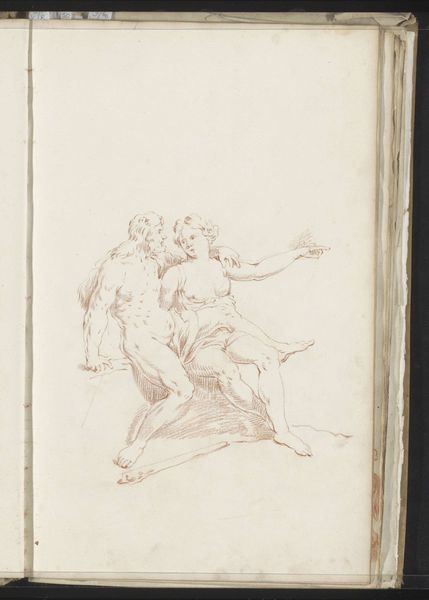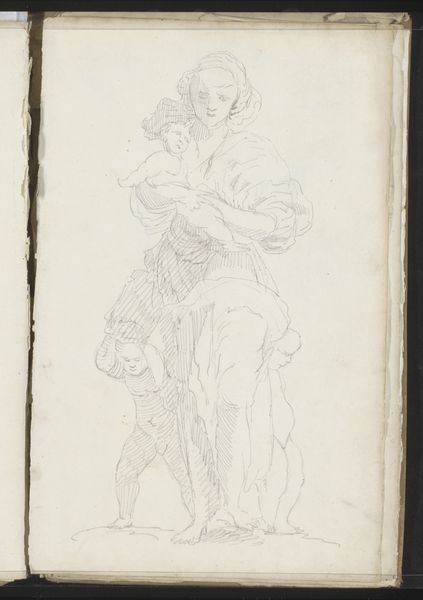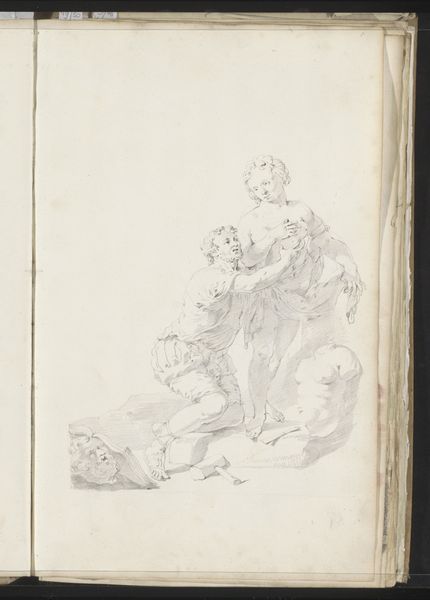
drawing, ink
#
drawing
#
baroque
#
pen sketch
#
landscape
#
figuration
#
ink
Copyright: Rijks Museum: Open Domain
Editor: So, we're looking at "Jupiter and Juno in a Landscape," a drawing in ink from around 1701 by Jacob Toorenvliet. There’s a lightness to the line work that makes it feel almost like a fleeting observation. How would you interpret this piece in its historical context? Curator: I see this as a product of its time. Toorenvliet, working in the early 18th century, clearly understands the market. The Baroque style was waning, but the taste for allegorical scenes and classical mythology remained strong, especially within aristocratic circles who consumed imagery reinforcing their status. This depiction of Jupiter and Juno is not just an illustration of a myth; it's a statement of power and order, reflected back to the elite. Notice how idealized they are – it's designed to appeal to a certain patronage, projecting an image of timeless beauty and authority. Do you see any visual elements that might support that idea? Editor: Yes, the controlled landscape in the background feels deliberately posed rather than natural, further suggesting a staging of power. So, the artistic choices serve a purpose beyond mere aesthetic appeal. Curator: Exactly. Think about the function of art academies at this time, enforcing classical ideals. The style becomes a signifier of class and erudition. The image, therefore, serves as social currency. The mythology lends itself to the demonstration of virtue. This wasn't simply art for art’s sake; it was art as a social and political tool. Editor: I never thought about it like that, as such a direct reflection of the socio-political dynamics. It's changed the way I see Baroque art now. Curator: Precisely! Seeing art through that lens illuminates so much about the priorities and power structures of the era.
Comments
No comments
Be the first to comment and join the conversation on the ultimate creative platform.
